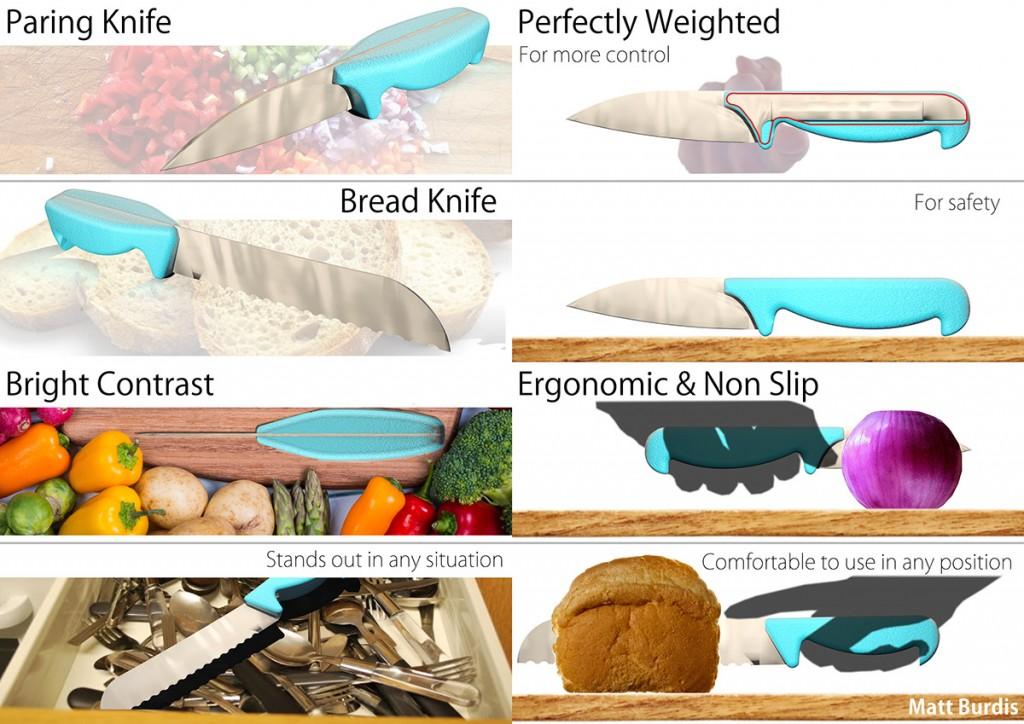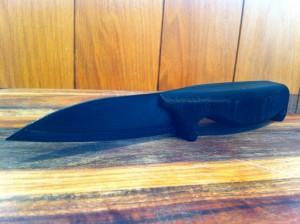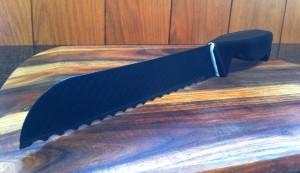 The young, healthy and able bodied among us often take our ability to easily use the world around us for granted. Media is made for us, stairs and walkways are designed for us and the products that we use every day are created to fit in our hands. But those who are disabled face a constant, everyday struggle to find a way to exist in a world that is so clearly not made for them. Even tasks as ubiquitous as opening a door or using a kitchen knife can be a neverending source of frustration, while the able bodied can’t even imagine not being able to perform them. One of the possibilities that 3D printing offers to people living with disabilities is the option to finally have products designed with their needs in mind.
The young, healthy and able bodied among us often take our ability to easily use the world around us for granted. Media is made for us, stairs and walkways are designed for us and the products that we use every day are created to fit in our hands. But those who are disabled face a constant, everyday struggle to find a way to exist in a world that is so clearly not made for them. Even tasks as ubiquitous as opening a door or using a kitchen knife can be a neverending source of frustration, while the able bodied can’t even imagine not being able to perform them. One of the possibilities that 3D printing offers to people living with disabilities is the option to finally have products designed with their needs in mind.
While there are actually almost a hundred different types of disorders that affect the joints collectively referred to as arthritis, one of the most devastating is rheumatoid arthritis. If you have a friend or a relative with this variety of arthritis then you are probably aware of how difficult it is for them to use basic objects like pens, remote controls or kitchen utensils. Extreme patients generally need to purchase specialized versions of everyday items, often at hugely inflated prices, just to be able to feed and dress themselves, but even minor cases can be limiting to many of the millions of people in the country suffering from the disorder.
It was with this in mind that Matt Burdis, a product design student at the University of Nottingham, designed a pair of prototype kitchen knives for elderly or arthritic patients. The knives have thick, bulky handles that make them easier for people with limited hand mobility to grip and hold well enough to use properly. Not only could designs like these make the act of simply preparing a meal less complicated and painful, but it could also reduce the risk of individuals losing their grip on the knife and cutting themselves with it.
“The brief for this project was to create a bread knife and a paring knife specifically designed for retirees and the elderly, with a particular focus on their needs and conditions such as arthritis. This meant there was a large emphasis on ergonomics and usability. To get an insight into the user’s needs focus groups were undertaken with some retirees and then later on in the design process a concept evaluation,” explained Burdis in his Behance presentation.
As Burdis explained, he conducted several focus groups and allowed participants to utilize several foam mock-ups that he generated to test the grip and usability of his prototypes. He also presented a concept board so his focus group could get a better idea of what his intentions were and help guide him to his final design. He took all of the issues presented to him by the group into account and incorporated them into his 3D printed prototypes. His design focused on a comfortable grip, proper knife weighting, safety of usage and even making the knife easier to find in a full drawer of utensils.
While these are just 3D printed prototypes created for a student project, if these knives ever did go into production they would obviously be made of more traditional materials. But for his prototypes Burdis used a standard FDM 3D printer and printed them in ABS, so they would be stronger and better simulate an actual knife. Because of the size of the bread knife and his limited printing envelope, Burdis cut the model in half, printed it in two separate pieces and held them together with Blue Tack for his presentation. However the paring knife was small enough to easily print in a single piece. Burdis also gifted each participant in the focus group with 3D printed models of the final design–although they are unusable, they still act as a reminder of what the future may hold.
School projects like these are intended to help design students get used to the concept of creating products for different groups of people with different or specific needs, rather than focusing on only their own needs. This is a standard lesson in most design courses, but the realities of traditional manufacturing, developing cost and market size dictate that products this specialized rarely end up being produced once designers graduate and become professionals. But it is my hope, and the hope of many people who are differently abled, that 3D printing will result in a democratization of product design and allow people with specialized needs access to inexpensive, customized devices like these.
Hopefully, a world with easy to use and inexpensive 3D printing technology can become a place capable of being designed for everyone, not just the average or societal norm. Knowing that an entire generation of designers are learning by using 3D printing technology fills me with hope that they will take with them the desire to create products for all people, not just some people. What do you think about 3D printing individual tools and utensils for the elderly or disabled? Let us know over on our 3D Printed Assistive Knives forum thread at 3DPB.com.
Subscribe to Our Email Newsletter
Stay up-to-date on all the latest news from the 3D printing industry and receive information and offers from third party vendors.
You May Also Like
Precision at the Microscale: UK Researchers Advance Medical Devices with BMF’s 3D Printing Tech
University of Nottingham researchers are using Boston Micro Fabrication‘s (BMF) 3D printing technology to develop medical devices that improve compatibility with human tissue. Funded by a UK grant, this project...
3D Printing Webinar and Event Roundup: April 21, 2024
It’s another busy week of webinars and events, starting with Hannover Messe in Germany and continuing with Metalcasting Congress, Chinaplas, TechBlick’s Innovation Festival, and more. Stratasys continues its advanced training...
3D Printing Webinar and Event Roundup: March 17, 2024
It’s another busy week of webinars and events, including SALMED 2024 and AM Forum in Berlin. Stratasys continues its in-person training and is offering two webinars, ASTM is holding a...
3D Printed Micro Antenna is 15% Smaller and 6X Lighter
Horizon Microtechnologies has achieved success in creating a high-frequency D-Band horn antenna through micro 3D printing. However, this achievement did not rely solely on 3D printing; it involved a combination...































